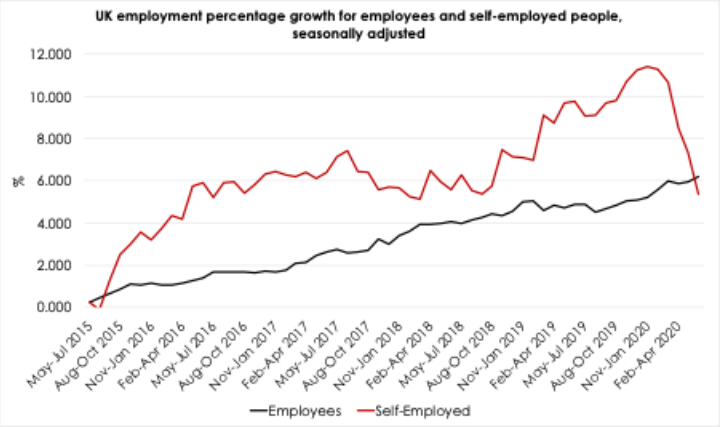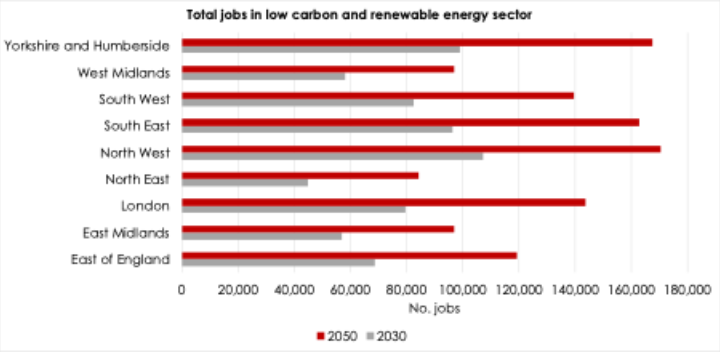The real test of a green recovery is still to come
2020 was touted as the year of climate action. Somewhat derailed by coronavirus, is there still chance to turn it around in a green recovery?

By Jess Ralston
@jessralston2Share
Last updated:
Quite simply, it doesn’t look good.
As of mid-August, the UK economy is officially in recession for the first time in 11 years. And while employment figures released to date – 730,000 fewer Brits in work than in March, including a whopping 115,000 fall in payroll numbers in July alone – are scary, the real test is still to come.
It is now widely understood that unemployment figures mask what is really happening, with the Government’s furlough scheme and millions of workers on reduced hours covering up the true scale of an economic contraction likely to dwarf anything seen in recent times.

This onslaught of terrifying data shows us a couple of things. Firstly, that for all the talk of rebuilding, most of the economy remains in the ‘survival’ stage. Secondly, that the case for a green recovery will need to be stronger than most of us thought necessary, ultimately priming the pump in a way that will support millions of jobs – directly and indirectly – in all corners of the UK.
The disgruntled response to the Chancellor’s Summer Economic Statement seemingly overlooks these points. It is crystal clear that the tranche of state cash to upgrade the nation’s leaky homes is a ‘jobs first, decarbonisation second’ policy. The next stage of the process – expected this autumn assuming that any second wave is manageable – will also be framed through this lens.
Regions
Back in June ECIU published an assessment of the potential for a clean stimulus package to boost parts of the UK that have fallen on hard times in recent decades.
It found that towns, cities and regions plagued by poor housing, chronic unemployment and badly managed de-industrialisation were in pole position for a boost that a green stimulus package would provide.
Refreshing this analysis with the most recent ONS employment figures further reinstates the conclusions.
Focussing on poorly insulated homes – so far the shining light in Treasury announcements – and the case for long-term support is only growing. Back in May, there was a clear correlation between areas with high unemployment and with poor housing stock. In three of the worst-affected areas – Blackpool, Middlesbrough and Wolverhampton – more than two-thirds of homes do not meet the Government’s medium-term efficiency standard, while all three areas recorded an unemployment rate more than double the national average (Table 1).
Fast forward just a couple of months, and joblessness has increased by more than 1 percentage point in each area – around 3,400 people.
| Area | Homes EPC D or below (%) | May 2020 unemployment rate (%) | July 2020 unemployment rate (%) |
|---|---|---|---|
Blackpool | 75 | 11 | 12.3 |
Middlesborough | 67 | 9 | 10.3 |
Wolverhampton | 70 | 9 | 10.4 |
The ONS employment data also highlights the need for targeted support. The Government’s Green Homes Grant scheme aims to boost demand for tradesmen, for whom the new data paints a grim picture.
Whilst managerial and professional occupations increased steadily over the summer, technical and routine operation workers saw decreases in employment of more than a tenth year to year - that’s over 300,000 people.
Plus there has been a record decrease in the number of self-employed - nearly a quarter of a million down from the previous quarter. This is not surprising when a survey recently revealed that 86% of firms reported a drop in business since March. However, some construction sector workers are expecting a sharp rise in the amount of work come September, when the Government’s Green Homes Grant comes into play.

A light at the end of the tunnel?
Incoming policies such as the Green Homes Grant (worth £2 billion) will provide jobs in energy efficiency and the construction sector from September. This will undoubtedly also help to combat the woeful levels of energy efficiency in regions like Blackpool.
Giving further hope to construction tradespeople, the number of vacancies in this sector has increased to 11,000 between May and July, a boost of 4,000 jobs from the previous couple of months. However, it may not be all smooth sailing with a third of companies intending to make redundancies over the next three months.
A boost to this industry could help to offset some of these redundancies then – the Green Homes Grant alone is expected to create 100,000 jobs all across the country, but particularly in areas that have poor quality housing – coincidentally and crucially, also areas with high levels of unemployment.
Taking green schemes such as this one further, the Energy Efficiency Infrastructure Group estimate that over 100,000 more jobs could be generated by a large scale retrofit programme to improve all homes to EPC band C by 2035. And the Local Government Association indicate that by 2030, the North West and Yorkshire and the Humber, both relatively high unemployment regions, could benefit most from a low carbon and renewable energy sector expansion in terms of jobs (c 107,000 in NW, c. 99,000 in Y&H).

For this reason the British Chambers of Commerce, alongside Totaljobs, have encouraged the Government to set out further support for workers before the Autumn budget, including a reskilling programme. This could potentially link to greener, more highly skilled jobs like heat pump installations which will also help the Government meet its decarbonisation goals.
Yet the number of job vacancies is not spread evenly throughout the country. In regions where unemployment is already high, like the North East at nearly 8% of people, the number of online job adverts is lowest compared to its average at the same time last year. Predictably, it’s London that has the closest current value to the average last year. But in a true green recovery, it’s regions like the North East that are set to benefit most.
Indeed, in the medium to long term, the ECIU’s previous analysis has identified the North East as being ripe for green investment as renewable offshore wind projects like Dogger Bank are given the go-ahead. 200 jobs are expected from the operations and maintenance base for this wind farm in the Port of Tyne alone, which is only set to increase as initiatives like Net Zero Teesside progress.
That’s reflective of jobs created in other renewable projects across the UK. RenewableUK estimates that at least 27,000 highly skilled people could be employed in offshore wind if the UK meets its target of an additional 40GW of wind power by 2030, and thousands more in the wider supply chain.
Massive job creation, improvements to poor quality housing (lowering energy bills) and support for the hard-hit construction sector can all be achieved through a green recovery. It’s difficult to see any drawbacks when the low carbon sector is expected to boom in all areas of the country as we head towards the net zero target set for 2050. With the Autumn budget and many upcoming strategies due over the next few months, however, the real test of how green the UK’s recovery will be is still to come.
Share